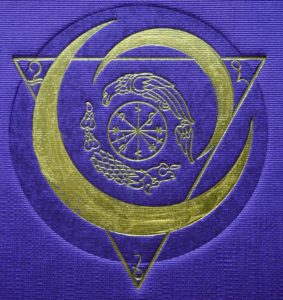
Sigil made by Radiana Piț on the cover of her book, Yearning for Spirit. Her native totem, the Crow-Raven and that of her Daco-Thracian ancestors, the Wolf, are depicted together in order to represent the symbiotic relationship between the two totems | Instagram: @crowhag
In my introductory article: Totems, familiars, power animals and where to find them, I’ve briefly mentioned the Wolf in regards to the symbiotic relationship it has with Corvus (Raven/Crow) in nature. I’ve repeated that in my The Crow and the Raven as Spirit Animals article, with regards to how my native totem, Corvus, has bonded with the totem of my Daco-Thracian ancestors, the Wolf as is represented on the cover of my book “Yearning for Spirit”.
While this is a bonding on a more personal level, perhaps only significant to me, it is generally true that the Crow and the Wolf work together splendidly both in nature and on the metaphysical/astral plane. The reason why I am sharing this brief personal account of the bond between the Crow and the Wolf is because I hope that it can serve your work in this direction and help you find your own totemic extension and symbiotic relationship.
In learning about the Wolf and other totems, you not only get to know the metaphysical and natural world of the animals, but you get to extend yourself and become deeply connected with nature and all of its fantastic beasts. The Wolf is the best animal to help you develop a deep connection with your instincts. He is a solar symbol, as well as a devourer of celestial bodies, he is a warrior hero, as well as a mythical ancestor.
He guides us in the darkness of the underworld on an initiatory path to the light of the wisdom of the ages. He is a keeper of time and his dark mouth (“Gura lupului” in Romanian) is a symbol of death and rebirth. The stability of his protective and reproductive behavior has been preserved and unchanged throughout time, which pretty much confirms the Romanian saying: The wolf changes his coat but not his nature, from the Latin proverb: Lupus pilum mutat, non mentem.
However, this is often used and interpreted negatively, but it still has the positive component of a preserved nature and strong determination. The wolf’s dignity survives throughout time and it is reflected by man’s inability to train the wolf into a circus dog.
The Wolf as Spirit Animal
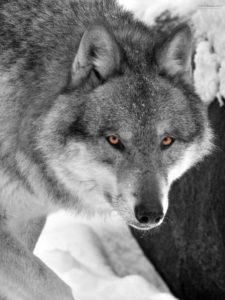
Wolf is the keeper of time, he is a symbol of death and rebirth, as well as a loyal protector. As a totem, the Wolf will always help you stand your ground in the face of adversity.
The wolf is a universal symbol of personal power, freedom, and autonomy. In Romanian lore, the Wolf is the only creature who can see demons no matter how hard they try to conceal themselves. Interestingly enough, wolves have also been observed to have a highly developed “sixth sense”.
The wolf may appear to you in order to warn you about something you are not able to see coming or in order to help you sharpen your intuition. Because it is also an independent and strong social character, the wolf can help you reduce your social anxiety and become more confident. In challenging times, he is also a reminder that everything you need to overcome misfortune with is already within you.
Contrary to popular belief, wolves don’t attack unless they need to or are provoked. However, they do stand their ground and can be quite intimidating. That is why the Wolf will always help you stand firm in the face of opposition. He is also extremely protective and his territory, pups, and proteges are sacred to him. In this sense, if he appears in your dreams or as a symbol around you, he may convey that your home needs protecting and you may rely on his protection.
The wolf also appears when you feel lost… his howl will help you find your tribe of kindred souls. As a totem, the wolf helps you develop your instincts, intuition, and connection with nature. If you’ve worked with this totem for a while, you probably crave or have found freedom and made a significant progress in developing your agility and vigilance.
The predatory nature of the wolf might often be misunderstood by those working with this totem. It is important to channel this predatory energy into a scholar, professional, or magical ambition, rather than a social or personal ambition that might end up hurting other people who are weaker than the wolf. As a power animal, the wolf will always appear when summoned.
Unlike the Raven-Crow who only appears to the worthy, the Wolf appears to anyone who needs protection and strength. If you howl, he’ll come to you. But be sure you can handle his intense energy that will start flowing through you for the time he’ll be present. It can come out more aggressively than desired unless measures are taken beforehand.
Wolf Lore
Daco-Thracian Wolf-Cults
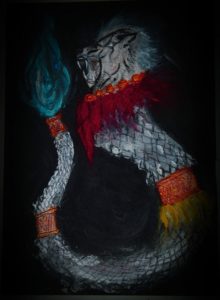
Illustration 1: Artwork by Radiana Piț of the Dacian Wolf, Draco. The red, yellow, and blue are associated with the 3 colors of a flame, and they would’ve been used by Dacians on the Draco banner. The current Romanian flag is inspired by the three colors of the Dacian banner. | Instagram @crowhag
The most prominent Wolf Cult in history was that of the my Daco-Thracians ancestors. The other peoples of Antiquity often called Dacia (the current territory of Romania) “the land of the wolves”. The Dacian people believed that they were descended from wolves, which is why the wolf was their totem and protector of the Dacian Army.
The Dacian Draco, the dragon with the head of a wolf was the banner they carried into battle and it can be seen in the depictions of the battle scenes from the Daco-Roman Wars (101-102 and 105-106) on Trajan’s Column in Rome. The banner had the body of a snake prolonged into a tail made of fabric and the head of wolf that had multiple metal tongues. The head was mounted on a pillar that the horse-rider carried into battle and when it was held in the wind, it would make fierce howling sounds that intimidated the enemy army.
Draco was alive in the minds of the Daco-Thracian army just as much as it seemed alive to their enemies. The word Draco (Latin) or Drakon (Greek) means “dragon”, but the origin of the word comes from the Greek “derkesthai”, often referred to as the “Dragon’s Eye” and it can be translated as “the one with the (deadly) glance.”
In his book, From Zalmoxis to Genghis Khan, the Romanian philosopher and historian, Mircea Eliade, suggests that the Dacians were a warrior breed under the sign of the wolf. Strabo names the Dacians as “Daoi” (from the word “daos” which originates in the Illyric word for wolf, “dhaunos”). The Daoi were worshipers of Kandaon, the Daco-Thracian god of war often associated with Mars. More specifically, the Daoi were also seen as a distinct brotherhood of Dacian warriors who believed their dragon-wolf banner was a manifestation of their supreme god, Zalmoxis, also known as the “Sky Dragon”.
It is said that Zalmoxis’ favorite animal was the wolf (“daoi” or “daos” in Thraco-Phrygian dialect) and the god was often associated with a white wolf. Romanian legends speak of the Great White Wolf with great respect. One of the oldest legends says that Zalmoxis turned one of his priests into a great white wolf which protected the land and people against enemy invasions. The ancestral Wolf would join the Dacian armies and with his howl, he summoned the wolves of the land into battle.
The wolf played an important role in the spiritual life of the Dacian people and this importance of the wolf was passed down from generation to generation. Saint Andrew was a witness to this in the old days and he found himself associated with the Wolf Cult. One legend says that it is the Great Wolf that welcomed the Saint into our lands.

Wooden sculptures of the Dacian Wolf at the salt mine in Prahova, Romania. The Dacian Wolf had the body of a serpent and the head of a wolf. Photo: Flickr.
Romanian Wolf-Cult and Lore
Remnants of this Wolf Cult still survive today. Originating in the solar symbol of the Great White Wolf associated with Zalmoxis, the wolf in Romanian mythology becomes a psychopomp. He guides the souls of the dead in the underworld and he is often invoked in funeral laments. In the old days, Romanians would baptize their weak children with the name “Lup” (“wolf” in Romanian) so that they would take the strength of the powerful beast.
Nowadays, Romanians celebrate the Wolf Sabbat or the ancient Dacian New Year, throughout the period of death and rebirth. It starts with “Filipii de toamnă” (Autumn’s Phillips) on November 10th – 14th and it ends approximately 80 days later, at “Filipii de iarnă” (Winter’s Phillips) on January 29th – February 2nd, when the long period of wolf breeding ends.
Each of the 7 days of celebration is called a “Filip”, which are wolf patrons, zoomorphic divinities ruled by the Great Phillip (overlapped with Saint Phillip the Apostle). There are multiple traditions and magical celebrations associated with each of these days, many of them borrowing the might of the wolf, asking for its protection, and favor.
However, the most important celebration that marks the transition between the old and the new year is the Night of the Wolf, which is now celebrated alongside St. Andrew’s Day – the Patron of Romania and Wolves – on November 30th. You can learn more about this celebration and its origins in my article The Night of the Wolf: The Romanian Celebration When Evil Spirits and Fearsome Wolves Roam the Earth.
Wolf-Cults Around the World
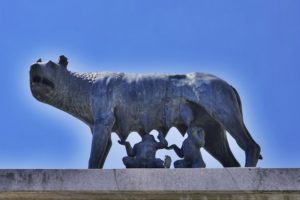
Capitoline Wolf Statue in Cluj-Napoca, Romania – the Capitoline Wolf is the most famous depiction of the mythical she-wolf, Lupa, and twins Romulus and Remus, the founders of Rome. It stands today as the symbol of ancient Rome and it is a testimony to the importance and age of the Wolf Totem. Photo by Radiana Piț, Instagram @crowhag
Much like the Dacians, the Romans also associated wolves with war and even with their god of war and agriculture, Mars. His sons, Romulus and Remus, the founders of Rome, were nurtured by the mythical She-Wolf Lupa (from the Latin word for wolf, “lupus”), as depicted by the Capitoline Wolf. The Greeks also associated the wolf with one of their gods, the same god that they associated the Raven with, Apollo.
Just like the Dacians, the Turks, Mongols, and Ainu people also believed that they’ve descended from wolves. To Mongols especially, the wolf was a symbol of luck and it was even involved in Mongolian folk medicine. They believed that eating the intestines of a wolf could alleviate chronic indigestion. To the Native American Pawnee, the wolf was a symbol of luck and strength as well. According to their creation myth which is similar to the myth of Pandora’s Box, the wolf was the first creature to experience death.
It is said that the Wolf Star was not invited to participate in the discussion on how the Earth will be created. Enraged by this, he sent a wolf to steal “the whirlwind bag of The Storm that Comes out of the West”. The bag contained the very first humans. When the Wolf Star opened the bag, the humans killed him and brought death into our world. The Pawnee associate Sirius with the Wolf Star and the Milky Way with the Wolf Road. The coming and going down the Milky Way of Sirius is a reflection of the birth and death of the Wolf Star.
The Wolf in Norse Mythology
The wolf was a prominent figure in Norse mythology as well. However, the wolf in Norse mythology is more dangerous and destructive. While Odin’s faithful pets, the wolves Geri and Freki were considered good omens, Loki’s eldest son and his offspring were quite the opposite.
According to legend, the malevolent wolf Fenrir, the eldest son of Loki, was bound by the gods. It is said that he will grow so large that his upper jaw will touch the sky while his lower jaw will touch the earth. His chains will no longer bound him, he will break free, and he will devour Odin during Ragnarok. His offspring, Skoll, and Hati will also devour the Sun and the Moon. Fenrir is a symbol of the end of times.
On the same note, the Zoroastrian, Japanese, Indian, and Finnic mythologies associate the wolf with death and destruction. The wolf has always been particularly hated and feared in Finland. Even the Finnish word for wolf, “hukka”, means “perdition”. Sadly, the wolf has been mercilessly hunted and killed by the Finns, as it was considered a malicious predator that killed more than it needed to.
Mythical Lycanthropy
The idea that man could transform into a wolf is present among the ancient people throughout the world and in Proto-Indo-European mythology, the wolves were associated with warriors who could transform themselves into wolves. Many believe that lycanthropy is a medieval concept, but it is much older than that. While the common European idea was that humans can turn into wolves, Virgil noted that the spirits of the forest were those that turned themselves into werewolves.
Unlike wolves, who can be seen as zoomorphic divinities, werewolves are always seen as evil and cursed. In Romanian mythology, the werewolf devours the Sun and the Moon and according to tradition, someone can be turned into a werewolf if they are not baptized, they disrespect tradition, kill their brother, or if they are bitten by an impure animal on the Night of the Wolf.
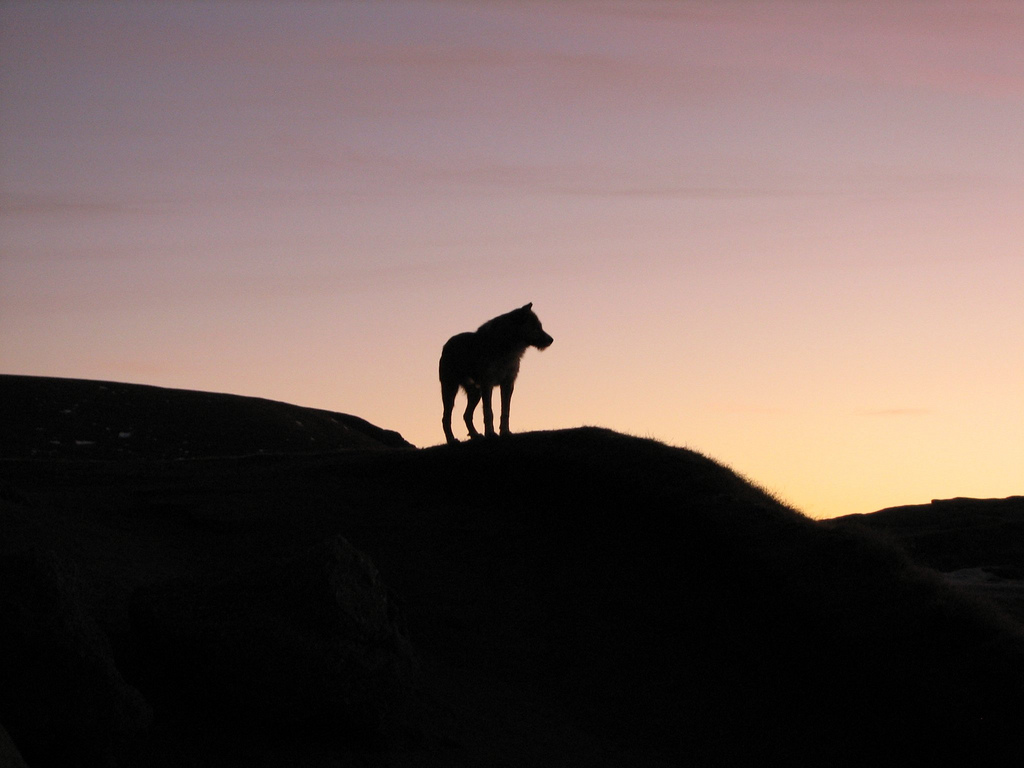
The Wolf, often perceived as a dangerous creature of the night, has inspired the belief in mythical lycanthropy, in which the keeper of time becomes the devourer of the celestial bodies, the Sun and the Moon.
It is said that such a thing leads to a transformation that can cut the soul from their body and their soul can be lost forever. To the Native American people, however, skin-changing into a wolf is considered an honor. In Greek mythology, Lycaon, the king of Arcadia who established the cult of Zeus, was turned into a werewolf after sacrificing a child to the god.
However, “mythical lycanthropy” is a primordial totemic and shamanic tradition that symbolizes metamorphosis and which has entered the realm of rituals in order to help humans attain the power of the wolf. This primordial tradition of attaining such power became a curse, especially in the Middle Ages. In the Middle Ages, pathological lycanthropy was explained through witchcraft and demonic possession and it was believed that committing a sacrilege would attract it as divine punishment.
That is why witches who were believed to be able to turn themselves into wolves to join the Sabbat were considered to be cursed and that a chance encounter with them on a moonlit night would pass the curse onto you.
Lycanthropy aside, the old relationship between man and wolf has surfaced once again thanks to the recent and well-deserved popularity of G.R.R.M.’s “A Song of Ice and Fire”. While werewolves were all the rage for a long time, now the man and wolf in a magical bond seem to be more popular. We see this in the House of Stark, where each of the Stark children is given a dire wolf that throughout the story accomplish various significant roles in the lives of each of the children.
It is suggested that all of them can warg into their wolves in their dreams, but more notably we see Bran before he becomes the Three-Eyed-Crow developing his warg and greenseer abilities through his wolf, Summer. With Jon Snow, we see a slight representation of the “death and rebirth” myth of the wolf and his role as a psychopomp.
In the books, just before he receives the final stab that kills him, Jon Snow whispers “Ghost”, which is the name of his wolf. That suggests that he might’ve warged into Ghost. In the television series, Jon’s dead body was left alone in a room, only with Ghost sleeping by his side. And just before he resurrects, Ghost flinches and looks towards him. On this note, I’ll leave with the words of Lord Eddard Stark: “When the snows fall and the white winds blow, the lone wolf dies but the pack survives.”

www.Nettlesgarden.com – The Old Craft


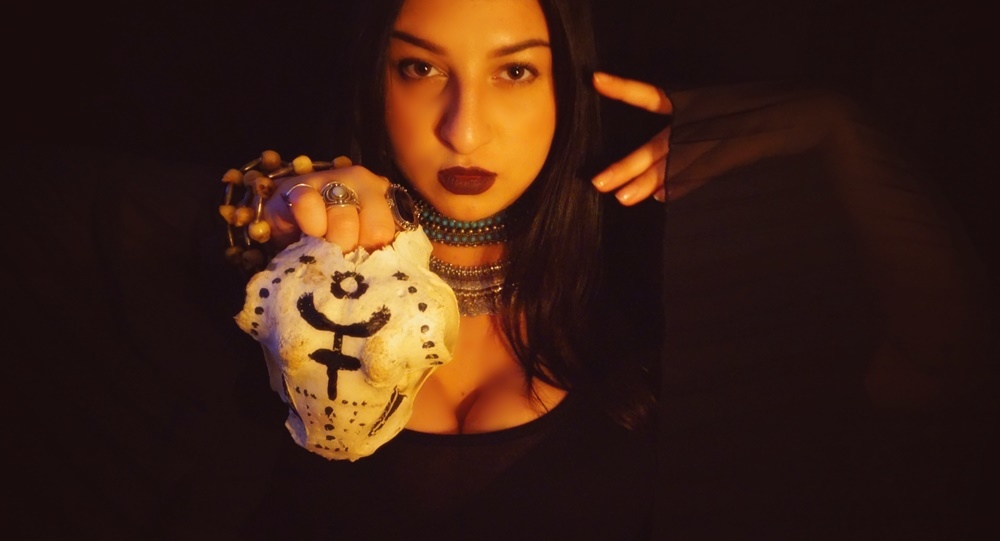
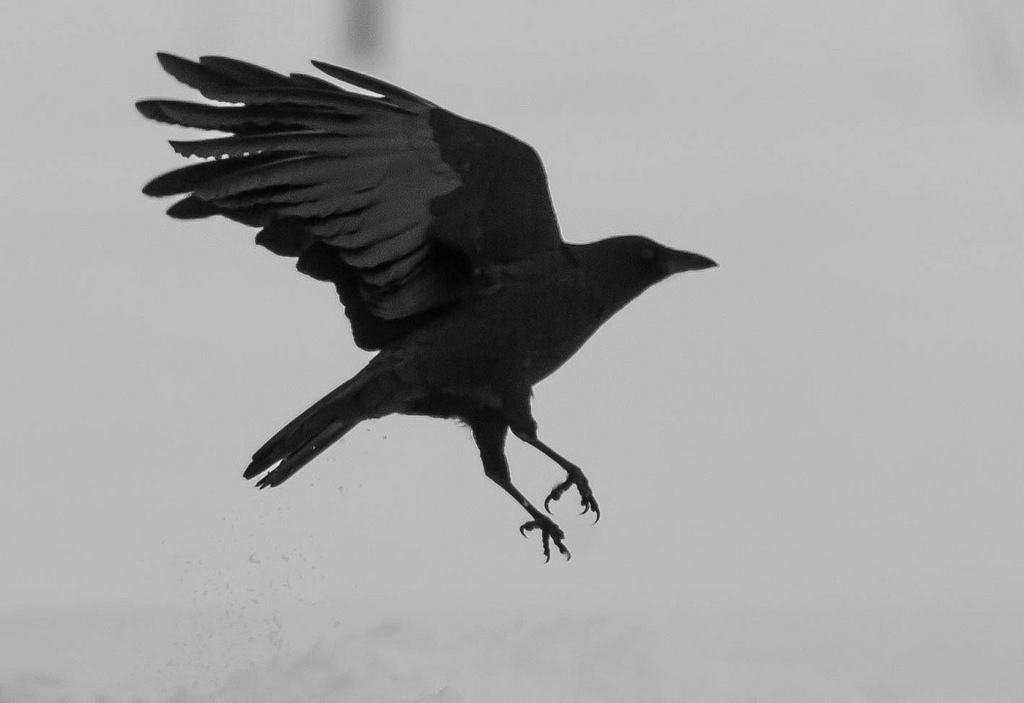
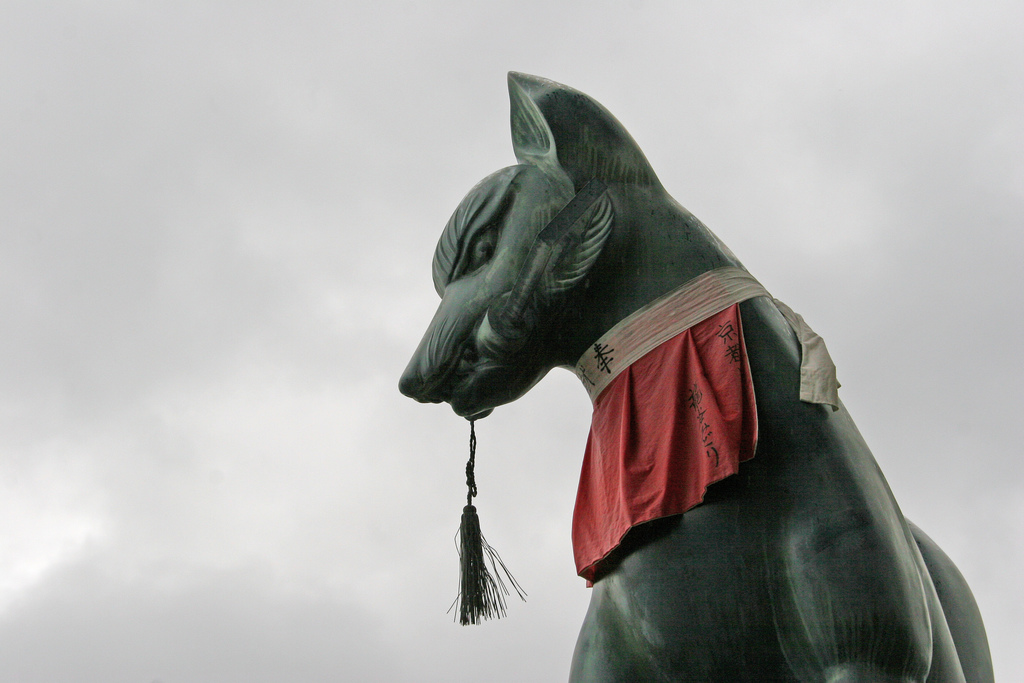
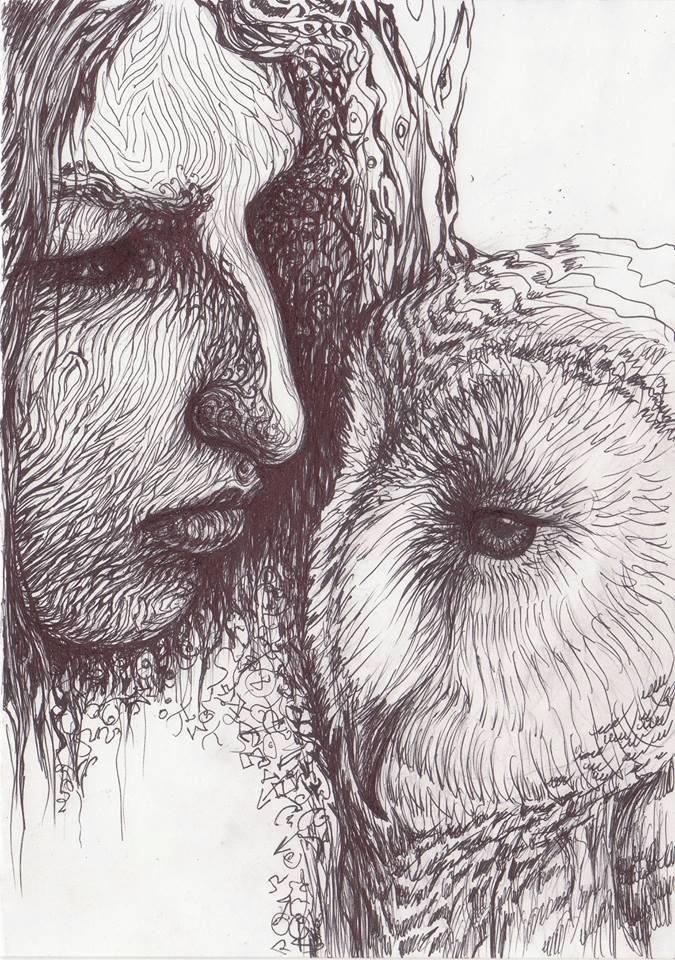
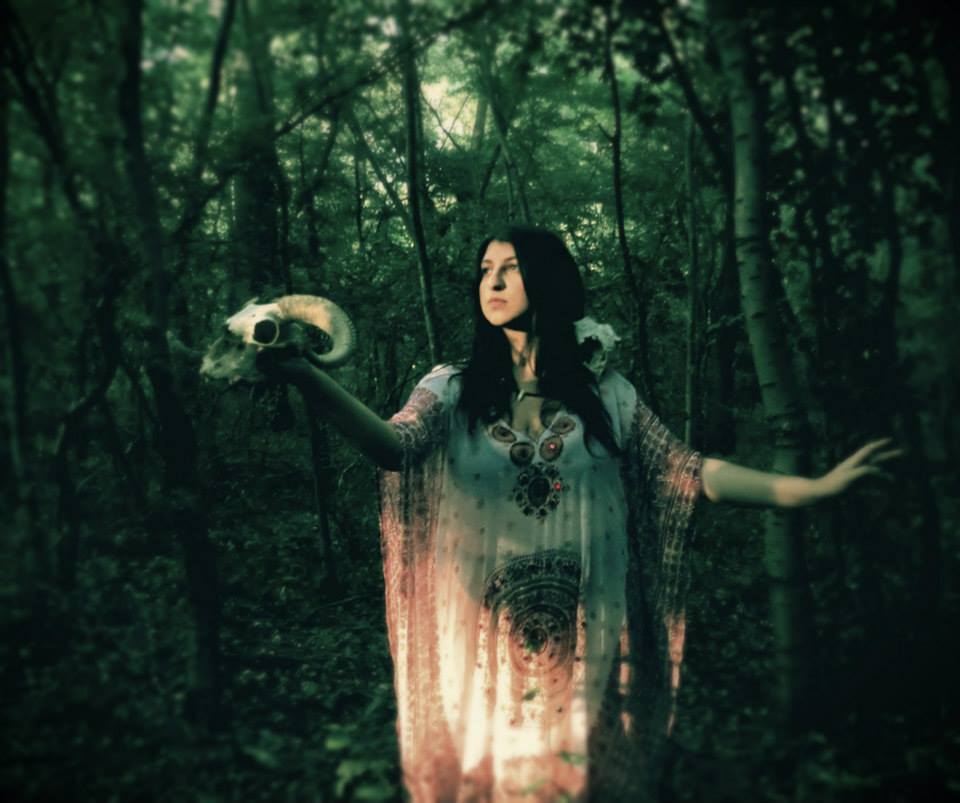
Michiel | May 4, 2018
|
Thank you yet again for an amazing and very informative article!
Radiana Piț | May 4, 2018
|
You are most welcome! Thank you for your positive feedback 🙂
Erik | September 13, 2018
|
thank you, i did something to try to visualize what spirit animals i had, but some of them i never thought i have and i dont know there meaning… i dont know if you could help me with this…. what i seen where many… and some shockly traits one of them have.. if u are willing to hear me out, i dont mind telling u what i seen..
Shadeed R. Ahmad | September 23, 2018
|
This is the most informative, interesting and inspiring article I’ve ever read on the wolf. Truly your heart and soul were put into this wonderful writing. Thank you for sharing these spiritual insights. Please keep up the beautiful style and content you display… Sincerely, Shadeed A.
Anindo Choudhury | March 17, 2020
|
Can I call call wolf sprit, if someone owes money to me and delaying the process of returning the money to me,can wolf help me